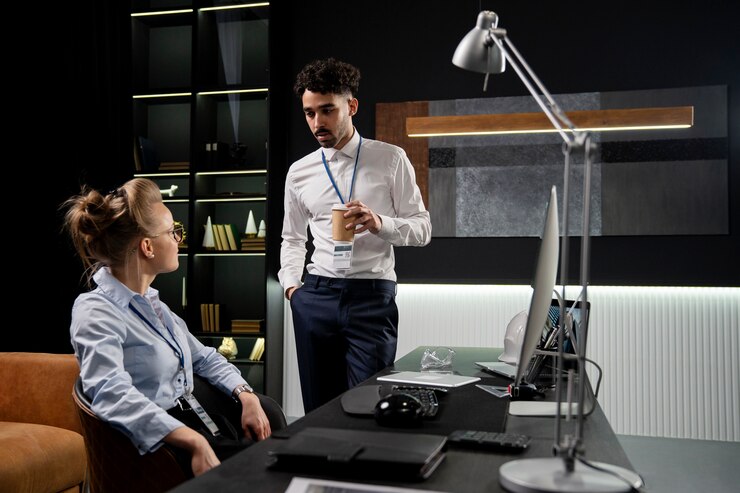Backcasting is a planning method that involves starting with a vision of the desired future and then working backward to identify the necessary steps to reach that future state. This approach contrasts with forecasting, which projects future developments based on current trends. Backcasting Room focuses on creating a proactive path towards a goal rather than predicting future events.
What is a Backcasting Room?

A backcasting room is a dedicated space, either physical or virtual, designed for collaborative strategic planning using the backcasting methodology. It is often used by organizations, teams, or stakeholders aiming to create long-term, impactful changes by envisioning a desired future and working backward from it.
Key Components of a Backcasting Room
1. Vision Creation Tools
The central focus of any backcasting room is the creation of a future vision. This can include tools like whiteboards, digital projectors, or virtual collaboration software. Participants gather to discuss and map out their ideal future scenario, whether it’s 10, 20, or even 50 years ahead.
2. Collaborative Space
A backcasting room fosters collaboration and creativity. Whether it’s a physical meeting space or an online platform, the environment is designed to encourage brainstorming, discussion, and participation from all stakeholders.
3. Backcasting Framework
Once the future vision is clear, a structured framework is used to work backward to the present. This framework includes:
- Milestones: Key events or changes that must occur to achieve the future vision.
- Actions: Concrete steps that need to be taken to reach each milestone.
- Responsibilities: Assigning roles and responsibilities to different team members or stakeholders.
How Does a Backcasting Room Work?
The process typically involves multiple stages:
- Defining the Desired Future: Participants define a clear and compelling future vision.
- Identifying Key Milestones: The group works backward from the vision to outline the major milestones or conditions that must be met to reach the desired state.
- Mapping the Path Backward: Starting from the final milestone, participants trace the path back to the present, identifying the necessary actions and changes.
- Assigning Responsibilities: Once the plan is created, responsibilities are assigned, ensuring everyone knows their role in executing the strategy.
Benefits of Using a Backcasting Room
1. Focused Long-term Vision
Unlike traditional methods that may focus on incremental improvements, backcasting allows teams to think big and focus on transformative change.
2. Proactive Planning
Backcasting is proactive rather than reactive. By working backward, participants can anticipate challenges and avoid simply responding to external forces.
3. Engagement and Collaboration
Because backcasting requires collaboration, it fosters team engagement and encourages participation from all stakeholders, resulting in more well-rounded and inclusive planning.
4. Flexible and Adaptable
Backcasting rooms can be used for a wide range of scenarios, from business strategy to sustainability projects. The method is adaptable to different fields and sectors.
Applications of a Backcasting Room
- Business Strategy: Companies use backcasting rooms to develop long-term strategies, particularly in industries facing disruptive changes.
- Sustainability Planning: Environmental groups often use backcasting to plan for sustainable futures, addressing climate change, renewable energy, and ecological preservation.
- Urban Development: City planners and governments use backcasting to envision and develop smart, sustainable cities.
- Education and Health Care: Backcasting helps schools and healthcare organizations envision future improvements and develop strategies to achieve them.
FAQs About Backcasting Rooms
1. What is the difference between backcasting and forecasting?
- Backcasting begins with a desired future and works backward to determine the steps needed to achieve that future. Forecasting projects forward from the present, based on current trends and data.
2. Why use a dedicated space for backcasting?
- A backcasting room provides a focused environment that fosters creativity, collaboration, and strategic thinking. It allows participants to step away from day-to-day operations and concentrate on long-term planning.
3. How long does a backcasting session typically last?
- Sessions can range from a few hours to several days, depending on the complexity of the vision and the number of participants involved.
4. Who should be involved in backcasting?
- Key stakeholders, decision-makers, and individuals with diverse perspectives are essential for the process. The broader the input, the more inclusive and realistic the planning will be.
5. Can backcasting be used in small businesses?
- Yes! Backcasting can be applied to businesses of all sizes. It is particularly useful for small businesses that aim to pivot or adapt to future market trends and challenges.
6. Is backcasting only used for long-term planning?
- While it is most effective for long-term visioning (10-20 years), backcasting can also be applied to medium-term goals, depending on the organization’s needs.
7. Do I need special tools to run a backcasting session?
- While specialized tools (e.g., collaboration software or whiteboards) can enhance the process, the most important resource is the collective knowledge and creativity of the participants. A structured process and an open mind are critical for success.
Conclusion
Backcasting rooms are a powerful tool for organizations and teams seeking to create a future that doesn’t yet exist. By fostering collaboration, creativity, and forward-thinking, they allow participants to imagine what could be and map out the steps necessary to get there. Whether used for business, sustainability, or societal change, backcasting helps bridge the gap between today’s reality and tomorrow’s aspirations.











